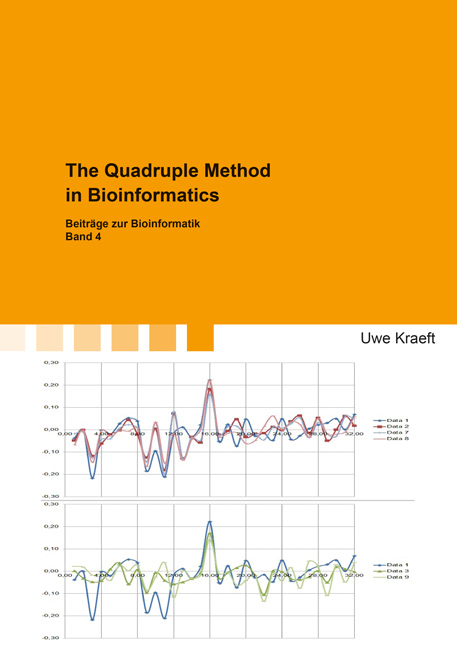
The Quadruple Method in Bioinformatics
Beiträge zur Bioinformatik Band 4
Seiten
2020
Shaker (Verlag)
978-3-8440-7236-5 (ISBN)
Shaker (Verlag)
978-3-8440-7236-5 (ISBN)
This book is the fourth volume of the “Beiträge zur Bioinformatik” (contributions to bioinformatics), in which several previous results of the Quadruple Method and partially of the Triple Method can be found.
After an introduction follow a comparison of triple and quadruple procedures for Hominidae and Bivalvia, examples of genes and chromosomes (CCR5, GGCX, LCT, TTN, PAX8, TBR1, S100P, ERBB2, and the chromosomes 1, 5, 11, 17, and 21 of Hominidae), examples of Gastropoda (Architaenioglossa; Littorinimorpha; Conoidea), examples of Echinodermata (Holothuroidea; Crinoidea and Asteroidea; Echinoidea), examples of Primates (Hominidae and Cercopithecinae 2 (Haplorrhini, Catarrhini); Hominidae and Platyrrhini generally (Haplorrhini); Hominidae and Macaca (Haplorrhini, Catarrhini); Hominidae (Haplorrhini), Daubentonia, Lemuridae (Strepsirrhini), and Trichosurus (Marsupialia); Cheirogaleidae (Strepsirrhini); Lepilemuridae (Strepsirrhini)), the phylogenesis of recent and fossil species such as an “evolution” of triple frequencies of Homo sapiens compared with those of plants and animals.
Further, a list of the used program modules, a choice of own bioinformatic literature, a short overview of the importance of mitochondria for man’s health, and calculations about the phylogenetic tree of Homo sapiens neanderthalensis are added.
After an introduction follow a comparison of triple and quadruple procedures for Hominidae and Bivalvia, examples of genes and chromosomes (CCR5, GGCX, LCT, TTN, PAX8, TBR1, S100P, ERBB2, and the chromosomes 1, 5, 11, 17, and 21 of Hominidae), examples of Gastropoda (Architaenioglossa; Littorinimorpha; Conoidea), examples of Echinodermata (Holothuroidea; Crinoidea and Asteroidea; Echinoidea), examples of Primates (Hominidae and Cercopithecinae 2 (Haplorrhini, Catarrhini); Hominidae and Platyrrhini generally (Haplorrhini); Hominidae and Macaca (Haplorrhini, Catarrhini); Hominidae (Haplorrhini), Daubentonia, Lemuridae (Strepsirrhini), and Trichosurus (Marsupialia); Cheirogaleidae (Strepsirrhini); Lepilemuridae (Strepsirrhini)), the phylogenesis of recent and fossil species such as an “evolution” of triple frequencies of Homo sapiens compared with those of plants and animals.
Further, a list of the used program modules, a choice of own bioinformatic literature, a short overview of the importance of mitochondria for man’s health, and calculations about the phylogenetic tree of Homo sapiens neanderthalensis are added.
| Erscheinungsdatum | 09.03.2020 |
|---|---|
| Reihe/Serie | Berichte aus der Medizinischen Informatik und Bioinformatik |
| Verlagsort | Düren |
| Sprache | englisch |
| Maße | 210 x 297 mm |
| Gewicht | 237 g |
| Themenwelt | Informatik ► Weitere Themen ► Bioinformatik |
| Schlagworte | Bioinformatics • Echinodermata • Gastropoda • Neanderthal man • phylogenesis • phylogenetic tree • Primates • Quadruple Procedure |
| ISBN-10 | 3-8440-7236-5 / 3844072365 |
| ISBN-13 | 978-3-8440-7236-5 / 9783844072365 |
| Zustand | Neuware |
| Haben Sie eine Frage zum Produkt? |
Mehr entdecken
aus dem Bereich
aus dem Bereich
Internationale statistische Klassifikation der Krankheiten und …
Buch | Softcover (2023)
Deutscher Ärzteverlag
CHF 34,95
Operationen- und Prozedurenschlüssel; Internationale Klassifikation …
Buch | Softcover (2023)
Deutscher Ärzteverlag
CHF 34,95


